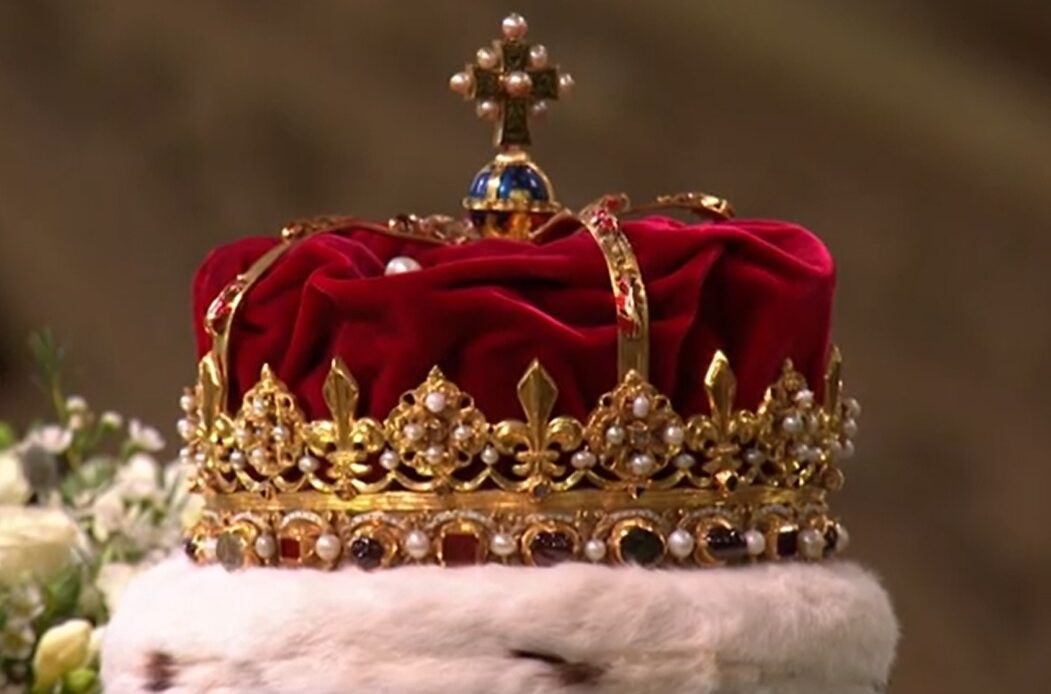
The Crown of Scotland will be presented to King Charles III in a special ceremony in Edinburgh. It will mark a milestone moment in his reign. Although this won’t be a coronation, it will be a recognition of his role as King of Scotland and the Crown involved has a special history.
A separate Crown of Scotland was present for King James I’s coronation in 1603, King Charles I’s coronation in 1626, and King Charles II’s Scottish coronation in 1651.
Known as the Honours of Scotland, the Scottish crown jewels are the oldest surviving in the British Isles. The Honours include the Crown of Scotland, the Sword of State, and the Sceptre.
The Royal Family describes the Crown of Scotland: “The circlet at the base is made from Scottish gold, encrusted with 22 gemstones and 20 precious stones taken from the previous crown. Freshwater pearls from Scotland’s rivers were also used. The crown weighs 1.64kg.“
The four arches were also preserved from the last crown and have a monde topped by a cross. The circlet has alternating fleur-de-lis and crosses fleury.
The current Crown of Scotland dates back to King James V’s reign; he had the original crown re-modelled in 1540. He first wore the new Crown of Scotland for Mary of Guise’s coronation, and his daughter Mary, Queen of Scots, was the first Scottish monarch to use the new crown at her 1543 coronation. (At less than a year old, the crown was held over her head.)
The Honours of Scotland had to be hidden from Parliamentarian forces during the Civil War and the Interregnum to avoid a similar fate to the English Crown Jewels. They were regularly used until the Act of Union in 1707; they were then locked in a chest in Edinburgh Castle that was not rediscovered until 1818.
The Crown, Sceptre, and Sword are all kept at Edinburgh Castle and are usually on display.
The Crown of Scotland has been present at the opening of the Scottish Parliament since 1999.
Now, it will be taken from Edinburgh Castle to St. Giles’ Cathedral for this historic ceremony for King Charles III.

